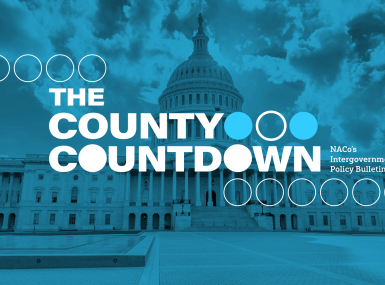Building Trust: The Framework for Responsible AI

Available On-Demand
This webinar is available on-demand. If you have issue accessing the recording, please email nacomeetings@naco.org.
As AI becomes an integral part of business operations, the imperative for responsible integration with existing county technology grows. This webinar will explore the critical considerations and frameworks necessary for implementing AI ethically and effectively. By exploring the core themes of transparency, accountability, reliability, safety, privacy, security, fairness, and human oversight, we aim to provide a comprehensive guide for harnessing AI's potential responsibly.
Our county guest speakers will share their experiences with AI deployments, providing valuable insights into overcoming challenges like reducing fears, addressing bias, and enhancing constituent trust. They'll share practical strategies for ensuring AI initiatives are both effective and efficient, delivering tangible benefits to communities.
Key Takeaways:
- Transparency and Accountability: Discover how to ensure AI systems are open and accountable, enabling trust and preventing misuse by clearly defining roles and responsibilities.
- Reliability and Safety: Learn about robust validation techniques to ensure AI systems perform accurately and safely in varied scenarios, protecting public welfare.
- Privacy and Security: Gain insights into safeguarding sensitive data and securing AI systems from breaches, in compliance with legal and ethical standards.
- Fairness and Non-Discrimination: Understand how to design AI systems that avoid biased outcomes, ensuring equitable treatment for all demographics and upholding civil rights.
- Human Oversight and Autonomy: Explore the importance of maintaining informed human oversight in AI processes to empower individuals and preserve their agency in decision-making.
By attending this webinar, you'll be equipped with the knowledge and tools to build a robust framework for responsible AI use.
Watch Recording
Speakers

Margaret Brisbane

Dan Fruchey

Shannon Smith
Upcoming Events

Modern Networks, Smarter Budgets: A County Leader's Perspective
Join us for a fireside chat with Orleans County, NY, as they share how their team successfully transitioned from a traditional capital expense (CapEx) model to an operational expense (OpEx) model for network services.
When faced with rising maintenance costs and an expiring carrier contract, the county seized the opportunity to modernize its network and lock in predictable monthly costs. By bundling connectivity services with unified communications, they achieved immediate savings of over $124,000, eliminated recurring charges such as long-distance fees and third-party integration costs, and gained access to operational upgrades like call analytics and auto-attendants.
This shift not only strengthened financial planning through fixed monthly expenses but also freed up IT staff to focus on strategic initiatives.
Key takeaway: Rethinking your budget model can be just as impactful as upgrading your technology — delivering fiscal stability and enhanced services for your community.
Featured Resource
County Tech Xchange
The NACo County Tech Xchange is an online portal designed to connect county CIOs, IT Directors, CISOs, and other county IT leadership. This portal provides valuable resources in a central location that counties can use to improve their overall technology infrastructure.

Related News

County Countdown – Dec. 1, 2025
Every other week, NACo's County Countdown reviews top federal policy advocacy items with an eye towards counties and the intergovernmental partnership.

U.S. House Passes Reauthorization Bill for the State and Local Cybersecurity Grant Program
On November 17, the U.S. House passed a reauthorization bill for the State and Local Cybersecurity Grant Program (SLCGP).

Unlocking AI Starts With Strong Data Governance
Strong data governance is the foundation of trustworthy AI in government. When Agencies inventory, clean, unify and steward their data, they unlock better decisions, improved services and stronger public trust.